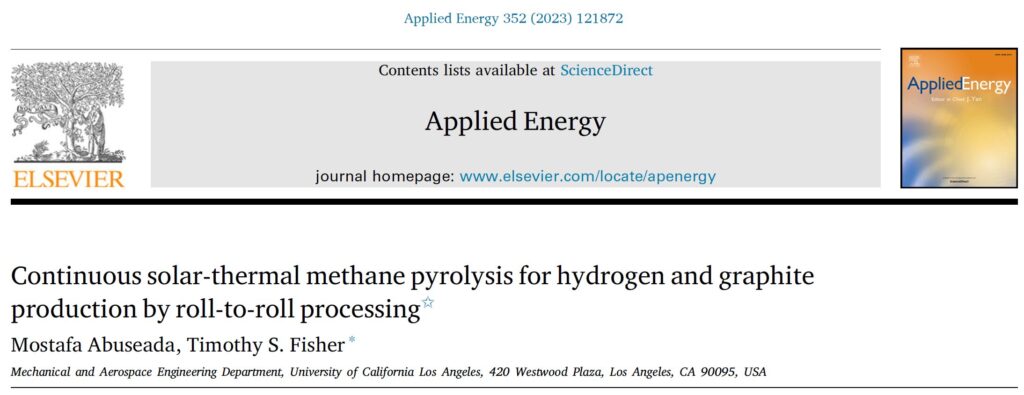- Synthesize hydrogen, graphite, and graphene continuously through novel roll-to-roll technology and with high quality and purity
- Direct solar-thermal process to produce renewable, clean fuel and high quality graphitic products with zero CO2 emissions
Global climate concerns have motivated the search for new approaches that can decarbonize fossil fuels to produce clean fuels and commodities at large scale. A promising approach is solar-thermal methane pyrolysis to convert natural gas into hydrogen and high-quality carbon product with virtually no CO2 emission. However, challenges in continuous methane pyrolysis include deactivation of catalyst, when present, and establishing a facile means of extracting the valuable carbon product. This work reports a scalable route to continuous solar-thermal methane pyrolysis that employs a roll-to-roll mode of operation using a fibrous carbon substrate. A high-flux solar simulator is used to mimic concentrated solar irradiation and to allow operation at temperatures as high as 1650 K, at which methane rapidly decomposes onto fibers of the porous carbon roll, collecting graphite and exhausting hydrogen and unconverted methane. The efficacy of the roll-to-roll approach for methane decomposition is demonstrated, and the technique is shown to be effective in achieving continuous processing. The roll-to-roll mechanism maintains stable and relatively high methane conversion compared to that of a stationary substrate, with enhancements in methane conversion up to a factor of 1.5. The efficacy of the roll-to-roll process is also evaluated through parametric variations of operating conditions, which include solar power (0.92 to 2.34 kW), methane inlet flow rate (25 to 2000 sccm), and pressure (0.67 to 4.67 kPa). The quality of the carbon product obtained is generally high, with Raman D/G peak ratios as low as 0.3. This work therefore establishes a highly functional baseline for continuous production of graphitic carbon and hydrogen from solar pyrolysis1.



